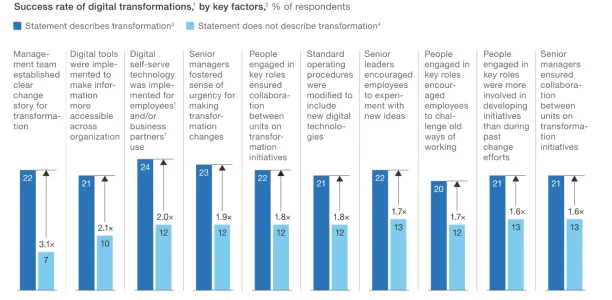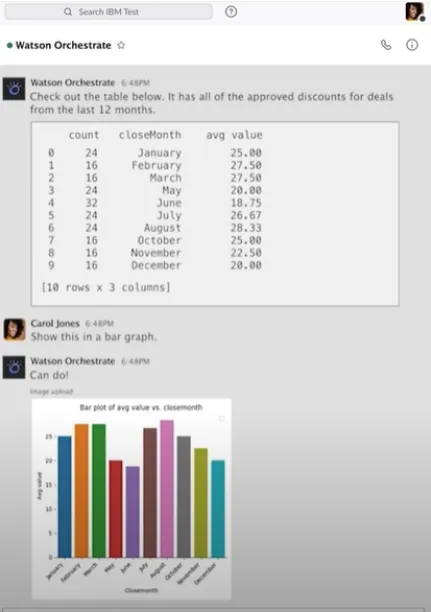Top 7 Digital Workers Best Practices & Deployment Tips in '24
Digital workers, often known as digeys, are sophisticated intelligent automation technologies. The purpose of digital employees is to augment your workforce by carrying out duties that would typically be handled by junior employees. They have a specific professional identity, a specific business unit to operate in, a certain amount of authority, and access to business technologies like ERP, CRM, and financial automation systems, much like their human coworkers. Their conversational AI features enable employees to interact with them, and they are designed to completely automate a number of corporate procedures from the beginning to end.
Despite the benefits of digital workers, very few business experts are aware of them, and there are few resources available on digeys. To remove the information gap surrounding digital workers, in this article, we highlight the top 7 best practices to help executives use them more efficiently.
1. Prioritize tasks you should automate
Digital workers are advanced automation tools. As a result, AIMultiple advises businesses to identify their most labor-intensive tasks for digital workers to take on. The importance of these jobs in monetary terms should also be taken into account when choosing which procedures to automate.
The board can work with the department heads to debate which process is best to deploy digital workers to automate after identifying the key areas.
2. Target end-to-end cases
When the objective is to fully automate a company process so that it can carry out a variety of duties, a digital worker is the best option. Although it is possible to automate specific tasks by using digeys, there are RPA bots for such duties.
Remember that digital workers are one of the most sophisticated automation tools.Therefore our advice to companies is to delegate the tasks where you can benefit from their end-to-end automation capabilities.
Also, remember that digital workers use AI which implies that the more they handle similar processes, the better decisions they can make. AI allows digeys to learn like humans by exposing them to different data and learning from the experience.
These are some end-to-end tasks which we believe are good candidates to be automated by digital workers:
- Hiring
- Promoting
- Pricing
- Preparing quarter accounting report and more
For instance, the video from IBM below further demonstrates how digeys offer complete automation for the hiring process.
If you need more information regarding use cases of digital workers you can read our 17 Digital Workers Use Cases for Different Business Units article.
3. Determine KPIs to measure success
Technology is merely a tool for achieving particular goals. So, the use of digital workers should have a clear business purpose. For instance, the goal can be to shorten the time it takes to decide who gets promoted, while at the same time trying to maintain a consistent level of employee satisfaction with fair judgment calls.
You must first decide on some KPIs before you can assess the impact of using digeys in your workplace. A successful reduction of the promotion period, for instance, from one month to two weeks, can be cited as an example. The only way to know whether this “quick” promotion time is due to efficiency or not, however, is to conduct anonymous surveys. If employees think the process was at least as fair as pre-digital workers era, you can determine new targets to further increase your efficiency.
4. Collaborate with a vendor that meets your business objectives
Although there are now very few producers of digital workers, tools vary, and these variations might be very expensive for your operations. Ask the following questions before doing business with a vendor:
- Is your digey easily integrated with the business tool my company uses (e.g. Salesforce)?
- Do you have any experience/case studies that show your digital worker’s capability in this specific business unit (e.g. HR)?
- What kind of cybersecurity measures does your product have?
- What kind of customer service policy does your company have?
5. Prepare your employees for the transformation
People dislike change, and employees, in particular, dislike automation-based changes because they fear losing their employment. As just 30% of digital initiatives are successful, overcoming these challenges is one of the most crucial components of a successful digital transformation plan.
A person is more inclined to accept a change if they are aware of the justification for it and can believe that it will not have a negative impact on their current situation. As seen from Figure 1, a well-designed digital transformation change story increases the success of digital transformation up to 3 times.
Figure 1: How much do specific factors impact likelihood of a successful digital transformation?

Digeys are not a substitute for human labor; on the contrary, they are dependent on people and could not function well alone due to their human in the loop nature. The goal of digital employees is to increase workforce productivity by combining the best aspects of human and artificial intelligence.
To maximize the likelihood of a successful deployment of digeys and a smooth transition, businesses should convey this message to their staff. Our recommendation is to assemble a team that discusses the rationale behind this strategy, and clearly explains anticipated benefits of deploying digital workers at your workplace.
It is also a good idea to start using digeys on jobs or projects where workers can quickly see digital workers’ worth. While avoiding radical change, it is crucial to let people become accustomed to and confident with digital employees.
6. Find new ways of working for your employees
To improve efficiency, your business must reimagine the division of labor if you decide to use digital workers. It may be even necessary to create new roles for your employees to ensure efficiency.
Demanding the same tasks of your staff after implementing digital workers would be inefficient because they are capable of executing end-to-end automation. Think about employing a digey to assist your company’s recruiters. Digital employees:
- Create and share ads for the vacancy.
- Check the talent pool to find suitable candidates for interviewing.
- Organize meetings between recruiters and candidates.
- Create and distribute spreadsheets with information on the qualifications of the candidates who pass the preliminary evaluation to various department managers.
Digital workers considerably free up time for recruiters in this scenario. During the interview process, recruiters might use this extra time to research in order to better understand how applicants fit the job vacancy. But perhaps they should also change the way they work.
As a company trying to maximize the return of digeys, you have to find new tasks and duties for people which are suitable to your business needs, your employees unique skills and characteristics. Though this process is not a simple one.
For instance, the study by Dell estimates that almost 80% of the occupations of 2030 have not yet been identified. How do you discover the unknown? But keep in mind that social media marketers, blockchain engineers, and data scientists are all relatively recent professions that did not exist just over ten years ago. And businesses that were first to identify these professions benefited from the first-mover advantage. Similarly today, businesses who implement intelligent automation technologies in a way that enhances their workforce will take an important step to be industry leaders in the 2020s.
You can run surveys and organize meetings with employees to learn more about their interests and passions in order to help your staff find new occupations. Additionally, you should make sure your company has an enabling culture that encourages brainstorming and creative problem-solving that will help you to identify new ways of division of labor.
7. Reconsider your recruitment policy
Digital workers are able to exert data, understand it, and draw conclusions from it. As demonstrated in Figure 2, for instance, a digey creates a chart for a salesperson by analyzing data from Salesforce.
Figure 2: Digital workers can interpret data

AIMultiple predicts that the relative importance of hard skills will decrease in the near future compared to now due to digital employees’ automation capabilities and their no-code nature. Thus, we anticipate that the following soft talents should be given more weight during the hiring process:
- Creativity
- Effective communication
- Emotional intelligence
- Leadership
HR executives also take into account retraining their coworkers so they may enhance their soft skills and adapt to the future of work.
If you want to learn more regarding digital workers you can reach us:
This article was drafted by former AIMultiple industry analyst Görkem Gençer.

Cem has been the principal analyst at AIMultiple since 2017. AIMultiple informs hundreds of thousands of businesses (as per similarWeb) including 60% of Fortune 500 every month.
Cem's work has been cited by leading global publications including Business Insider, Forbes, Washington Post, global firms like Deloitte, HPE, NGOs like World Economic Forum and supranational organizations like European Commission. You can see more reputable companies and media that referenced AIMultiple.
Throughout his career, Cem served as a tech consultant, tech buyer and tech entrepreneur. He advised businesses on their enterprise software, automation, cloud, AI / ML and other technology related decisions at McKinsey & Company and Altman Solon for more than a decade. He also published a McKinsey report on digitalization.
He led technology strategy and procurement of a telco while reporting to the CEO. He has also led commercial growth of deep tech company Hypatos that reached a 7 digit annual recurring revenue and a 9 digit valuation from 0 within 2 years. Cem's work in Hypatos was covered by leading technology publications like TechCrunch and Business Insider.
Cem regularly speaks at international technology conferences. He graduated from Bogazici University as a computer engineer and holds an MBA from Columbia Business School.
To stay up-to-date on B2B tech & accelerate your enterprise:
Follow on
Comments
Your email address will not be published. All fields are required.